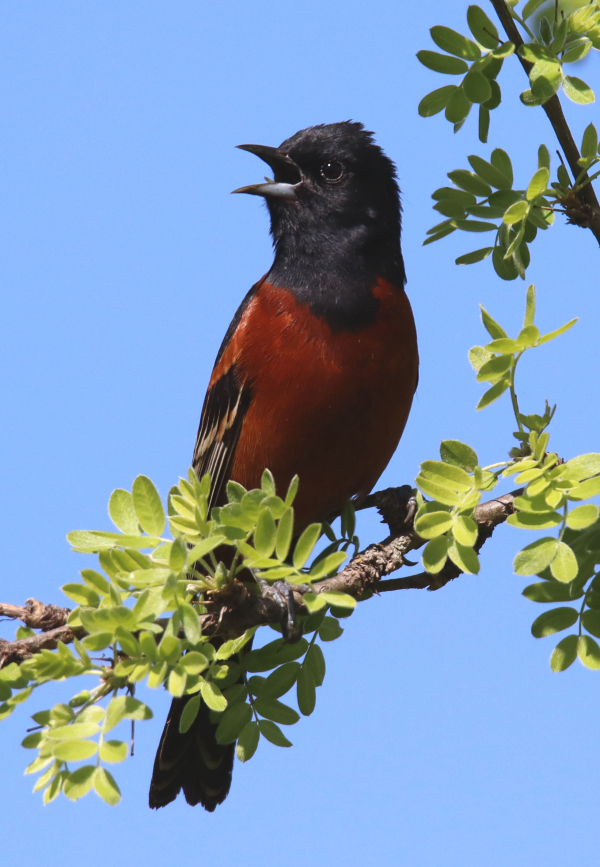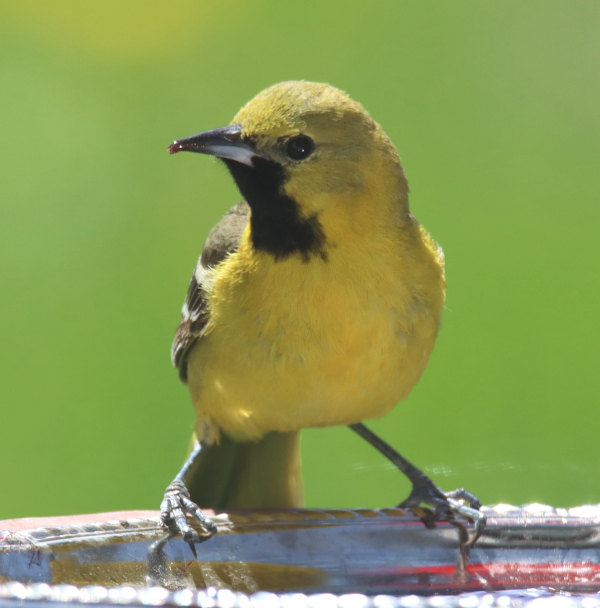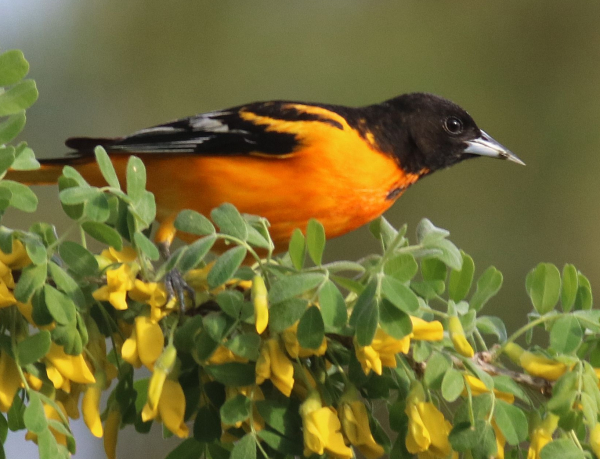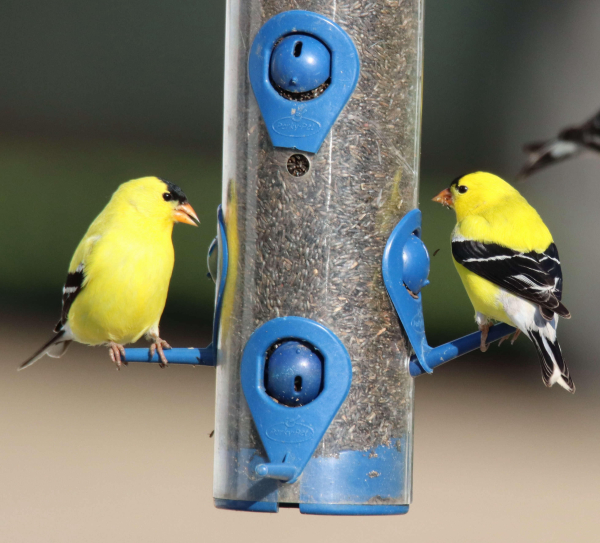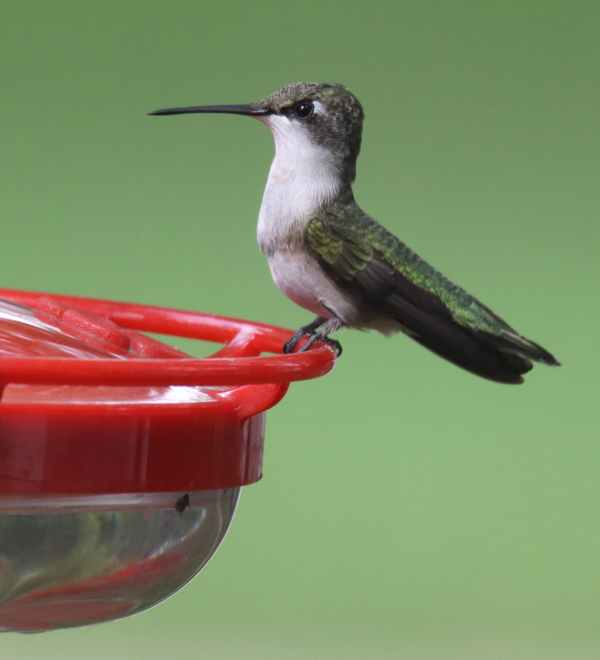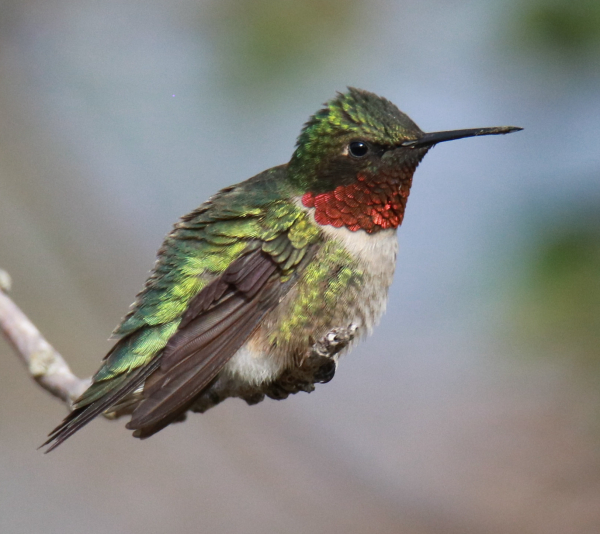Practicing Bird Song IDs
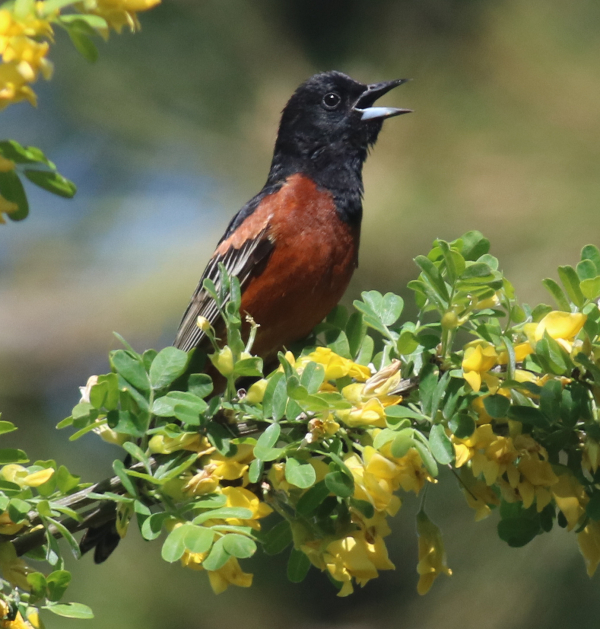
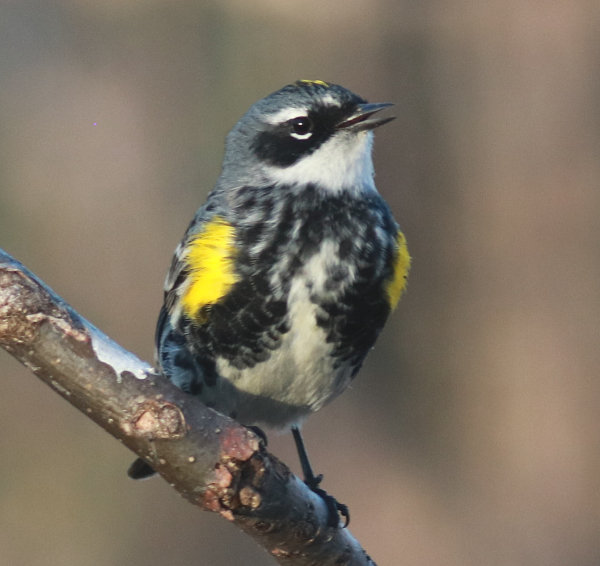
With birds beginning to sing in earnest this spring, and new birds migrating into your neighborhood now through early June, it’s time to start practicing your birding by ear skills. That is, it’s time to refresh your memory, or relearn bird songs and calls you have forgotten since last spring. Those songs will come back to mind quickly, but it’s also a great time to learn new songs to add to the list of birds you can identify when you hear their songs. Overall, learning bird songs and calls makes you a better birder – and it’s fun!
Any veteran birder will tell you that learning bird songs is a great way to identify distant birds, birds hidden by dense foliage, birds at night, and birds that look almost identical to each other. In fact, when biologists count birds in the field, the majority of species are identified by hearing their songs rather than by seeing them. Same thing for most World Series of Birding and Big Day birders – many of the birds on their species lists are heard and not seen.
When you reach a given birding destination, you can do a quick survey of what’s around before you begin a hike. If you hear a song or call you don’t recognize, you zero in your attention on that location to find the singer. And throughout times afield, your experiences will be enhanced when you get to know the birds you see by their songs and calls. Same thing in your yard and workplace. If you are looking for some direction to get started, The Cornell Lab provided a great primer on how to make bird song identification easier and more rewarding:
– 5 Tips to Help You Learn or Refresh Your Bird Song IDs This Spring
1) Watch and Listen – It’s easiest to make the connection between the bird and its song when you see a bird singing. Whenever it’s possible, the sounds tend to stick in your mind best when you can see a bird singing the notes.
2) Learn from Another Birder – It’s much easier to learn bird songs from a fellow birder who can point out a variety of bird songs and calls to you. Ask a friend to help, or check for a nearby birding club, nature center, or Audubon chapter to join a field trip.
3) Listen to Recordings – It’s fun to start by listening to song recordings of birds you see regularly. Repetition really helps to memorize the sounds. There are many resources for bird songs; some field guides even come with an accompanying bird song CD. But your best bet is using the resources at the Cornell Lab of Ornithology, which has a number of helpful websites, and they offer the free Merlin app to help you identify and learn bird songs.
The Macaulay Library is the best source to access any bird songs and calls. At their website, just type in the species name of the bird you wish to hear in the Explore Species box at https://www.macaulaylibrary.org/ When the species’ page appears, just click on the green button at the lower right side of the screen, and enjoy the sounds. Of course, you can learn any number of other things about the species at the same time.
A great mobile, cellphone-based source of information about bird identification, including bird songs, is Merlin, a free smart phone app that you can use to learn and practice bird songs and utilize at home or while you’re in the field; see https://merlin.allaboutbirds.org/
4) Details, Details, Details – As you listen to the birds around you, or study recordings, break a given song apart into its different qualities, including rhythm, pitch, tone, and repetition.
5) How to Listen to a Bird Song – Concentrate on one bird at a time when you’re trying to learn individual songs. Sometimes it’s best to focus on one quality of a song at a time, rather than trying to memorize the entire song. Many birds have a characteristic rhythm, pitch, or tone to their song. When you zero in on one of these qualities, you will start to get a better sense of the bird’s identity; by learning a part or parts of a bird song, you will eventually add the entire song to your memory.
– 4 Bird Song Qualities to Focus Upon
Rhythm – Become accustomed to a bird song’s characteristic tempo. For example, Marsh Wrens sing at a fast pace, while White-throated Sparrows have a slower rhythm.
Pitch – Most birds sing in a characteristic range, with smaller birds typically having higher voices and larger birds having a little deeper voices. Many bird songs change pitch, as with a Prairie Warbler’s rising buzzy song, or a Canyon Wren’s sweet descending whistles. Some birds are distinctive for having steady voices, like a Chipping Sparrow’s trilling song.
Repetition – Some longer bird songs characteristically have repeated syllables or phrases before leading to a new sound. This can be helpful; for example Northern Mockingbirds do this many times in a row. Brown Thrashers sound similar, but they typically repeat a phrase only twice before changing to a new syllable.
Tone – The tone of a bird’s song is sometimes hard to describe, but it can be very distinctive. To begin with, pay attention to whether a bird’s voice is a clear whistle, harsh or scratchy, liquid and flute-like, or if it’s a clear trill. If you can remember the quality of a bird’s voice, it can give you a clue to the bird’s identity even if the bird doesn’t sing the same notes every time.
Enjoy this information as a beginning or refresher article; it was originally published at https://www.allaboutbirds.org/news/how-to-learn-bird-songs-and-calls/ Soon we will have more to share about bird song identification. For now, you have a good basis to get started and you can follow information threads where they may lead you – or where the birds you hear outdoors lead you. Enjoy the advent of the spring birding season!
Share your birding experiences and photos at editorstbw2@gmail.com

